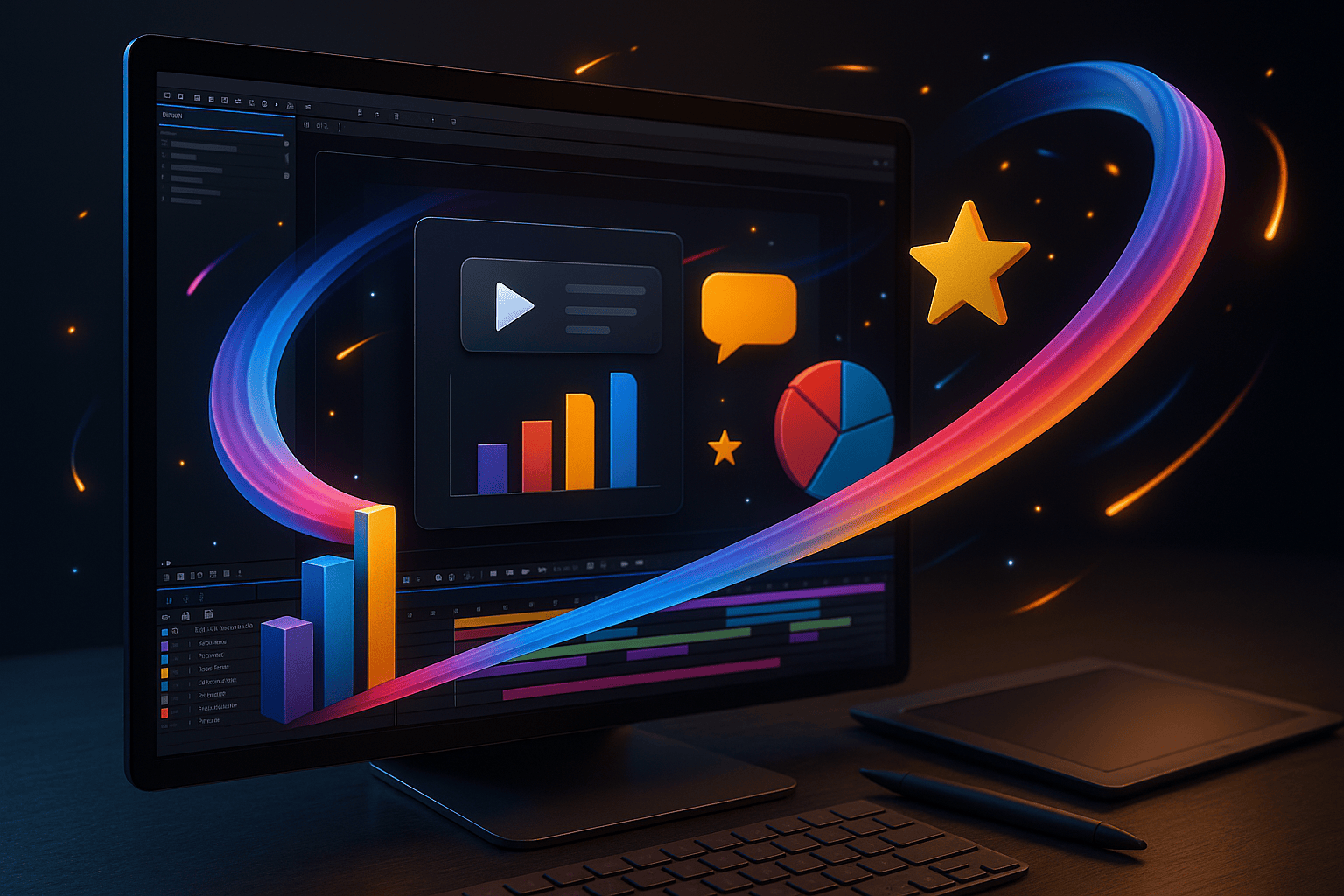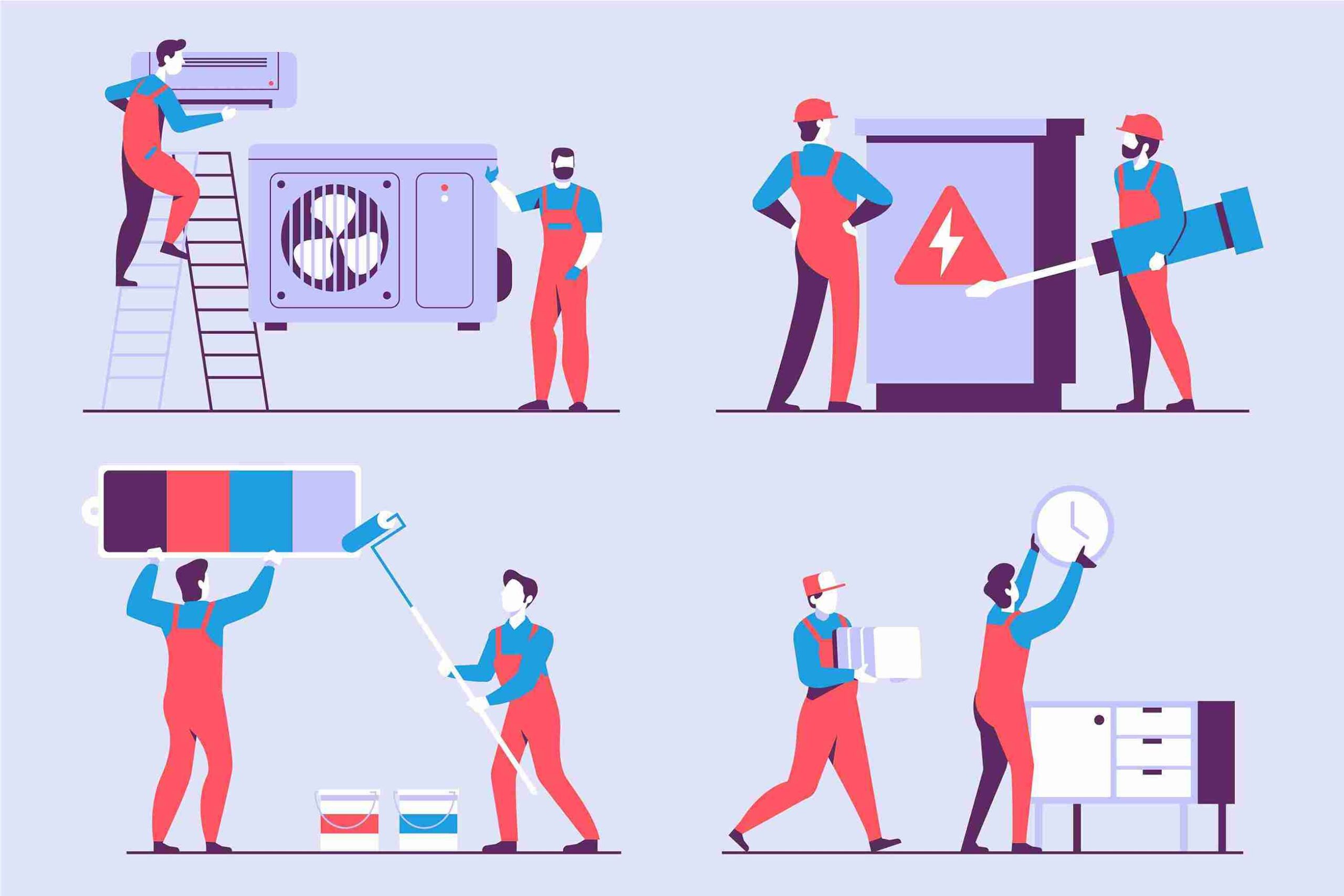A story can change how we think, feel, or act, but how it’s told matters. Words paint vivid pictures in books or speeches, yet motion graphics bring stories to life with moving visuals, sound, and rhythm. From explainer videos to social media animations, motion graphics captivate in seconds, often outshining text alone. Why? They merge art and information to engage audiences instantly. This article focuses into how motion graphics convey tales more effectively than words, their capabilities in storytelling, and their significance in modern communications. Let’s investigate what makes these graphics so effective.
What Are Motion Graphics in Storytelling?
Motion graphics are animated visuals that integrate text, images, and sound to tell stories or share information dynamically.
- Visual Foundation – They use 2D or 3D animation, typography, and illustrations to present ideas in a clear, engaging format.
- Storytelling Role – Motion graphics simplify complex narratives, like a product’s benefits, into concise, memorable visuals.
- Production Process – A motion graphics designer storyboards, animates, and refines visuals to align with a brand’s message.
- Key Features – They combine motion, timing, and sound to create immersive stories, unlike static text or images.
- Applications – Used in ads, explainer videos, or branding, they suit businesses, education, or entertainment sectors.
Motion graphics turn stories into visuals that move and connect with viewers instantly.
How Do Motion Graphics Compare to Words for Storytelling?
Motion graphics and words each have strengths, but their storytelling approaches differ in delivery and impact.
- Speed of Delivery – Graphics convey ideas in seconds through visuals, while words require time to read or hear fully.
- Emotional Impact – Animations with music or visuals evoke feelings faster, like a heartfelt charity video, compared to text alone.
- Clarity for Complexity – Graphics simplify intricate concepts, like tech processes, where words might overwhelm with jargon.
- Audience Engagement – Motion captures attention on platforms like Instagram, where scrolling stops for visuals, not text.
- Memory Retention – Studies, like Wyzowl’s 2023 report, show animated videos boost retention by up to 80% versus text.
Why Do Motion Graphics Excel in Visual Storytelling?
Motion graphics shine in storytelling by blending multiple elements to create engaging, memorable narratives.
- Dynamic Visuals – Animated characters or objects, like a product in motion, make abstract ideas tangible and relatable.
- Sound Integration – Voiceovers or music add emotional depth, making stories more immersive than text descriptions.
- Concise Messaging – Short animations (30-90 seconds) deliver key points quickly, ideal for short attention spans.
- Flexible Styles – A motion designer can tailor visuals, from cartoonish to professional, to match audience or brand needs.
- Interactive Potential – Animations on websites or apps can include clickable elements, engaging viewers beyond passive reading.
Motion graphics weave visuals and sound into stories that stick with audiences long after words fade.
When Are Words Better Than Motion Graphics?
Words have unique strengths that can outshine motion graphics in specific contexts.
- Detailed Explanations – In-depth reports or articles allow nuanced arguments that animations might oversimplify.
- Low-Budget Needs – Text is cheaper and faster to produce, ideal for small businesses without animation budgets.
- Searchable Content – Written content is easily indexed by search engines, unlike videos, which rely on captions or transcripts.
- Personal Tone – Written stories, like blogs or letters, can feel intimate, fostering a direct connection with readers.
- Static Reference – Manuals or guides in text are easier to skim or revisit than rewatching a video.
Comparing Motion Graphics and Words in Storytelling
| Medium | Engagement | Production Cost | Clarity | Best Use Case |
| Motion Graphics | High, visual appeal | Moderate to high | High for complex ideas | Explainer videos, ads |
| Words (Text) | Moderate, depends on style | Low, quick to produce | High for detailed content | Blogs, reports, guides |
| Words (Spoken) | High, with good delivery | Moderate, needs recording | Moderate, depends on clarity | Podcasts, speeches |
How Do Motion Graphics Engage Audiences?
Motion graphics capture attention and hold it through strategic design and storytelling techniques.
- Visual Hooks – Bold colors or smooth animations, like a zooming logo, grab viewers within the first few seconds.
- Emotional Resonance – Music or animated characters evoke feelings, making stories relatable, like a nonprofit’s impact video.
- Platform Fit – Short, vibrant clips suit social media, while longer explainers work for websites or presentations.
- Clear Calls to Action – Animations often end with prompts, like “Learn More,” driving viewer action effectively.
- Cultural Relevance – Localized visuals or references, crafted by a motion graphics designer, connect globally.
What Makes a Motion Graphic Story Effective?
A well-crafted motion graphic tells a story that’s clear, engaging, and aligned with its purpose.
- Structured Narrative – A beginning (problem), middle (solution), and end (benefit) keeps the story focused and logical.
- Audience Focus – Tailoring content to viewers, like simplifying tech for beginners, ensures relevance and impact.
- Visual Simplicity – Clean designs avoid clutter, making key messages stand out, especially in short videos.
- Sound Design – Balanced voiceovers, music, or effects enhance the story without overpowering the visuals.
- Brand Consistency – Colors, fonts, and themes reflect the brand, reinforcing recognition and trust.
How Do Freelance Motion Graphics Designers Craft Stories?
A freelance motion graphics designer brings stories to life through skill, tools, and collaboration.
- Storyboarding – Designers sketch the narrative flow, ensuring visuals and pacing align with the story’s goals.
- Animation Tools – Software like After Effects or Premiere Pro creates smooth, professional animations for diverse platforms.
- Client Input – Feedback loops ensure the story matches the client’s vision, from initial concept to final render.
- Time Management – Designers balance creativity with deadlines, delivering polished videos for time-sensitive campaigns.
- Style Adaptation – They adjust animation styles, like minimalist or bold, to suit the story and audience.
A motion designer turns raw ideas into stories that move, inform, and resonate with viewers.
What Challenges Exist in Motion Graphic Storytelling?
Creating effective motion graphics for storytelling comes with obstacles that designers must overcome.
- Time Constraints – Tight deadlines for campaigns can limit creative depth, risking simpler or less unique stories.
- Budget Limits – High-quality animations require investment, which may challenge small businesses or startups.
- Audience Overload – Competing with countless videos demands standout visuals or narratives to avoid being overlooked.
- Technical Demands – Complex animations need powerful software or hardware, which can strain freelance setups.
- Balancing Clarity – Simplifying stories without losing depth requires skill, especially for technical or niche topics.
What’s the Future of Motion Graphics in Storytelling?
Motion graphics are evolving to meet new technologies and audience expectations.
- Interactive Stories – Clickable or gamified animations let viewers shape the narrative, boosting engagement on websites.
- AI Assistance – AI tools streamline storyboarding or animation, allowing designers to focus on creative storytelling.
- Short-Form Focus – Platforms like TikTok prioritize ultra-short, high-impact stories to capture fleeting attention.
- Localized Content – Tailored visuals for global audiences, like regional symbols, expand storytelling’s reach.
- Immersive Tech – AR or VR integration creates 3D-like motion graphics, pushing storytelling into new dimensions.
FAQs About Motion Graphics and Storytelling
Can motion graphics tell stories better than words?
They excel in quick, emotional, and visual storytelling, especially for complex ideas, but words are better for detailed or text-based content.
How do motion graphics engage audiences?
They use bold visuals, sound, and concise narratives to capture attention and evoke emotions, ideal for digital platforms.
What role does a freelance motion graphics designer play?
They storyboard, animate, and refine visuals to create compelling stories that align with a brand’s goals and audience needs.
When are words more effective than motion graphics?
Words suit in-depth explanations, low-budget needs, or searchable content, like reports, blogs, or manuals.
How long should a motion graphic story be?
Most last 30-90 seconds, balancing brevity with clarity to suit short attention spans on platforms like YouTube.
What makes a motion graphic story memorable?
Clear narratives, emotional resonance, simple visuals, and brand alignment ensure stories stick with viewers.
Can motion graphics work for any industry?
Yes, they adapt to tech, education, retail, or charity, with styles customized to each sector’s audience and goals.
What trends are shaping motion graphics in 2025?
Interactive elements, AI tools, short-form content, and localized visuals are driving more engaging, efficient storytelling.
Wrapping Up
Motion graphics tell stories with a power that words alone often can’t match, blending visuals, sound, and motion to engage and inform. A motion designer crafts these narratives with precision, turning ideas into animations that resonate across platforms and industries. While words excel in depth or simplicity, motion graphics shine for quick, emotional, and clear storytelling. As technology evolves, from interactive videos to AI-driven design, their role in storytelling grows. Ready to tell your story? Connect with a skilled motion designer to create visuals that captivate and endure.



